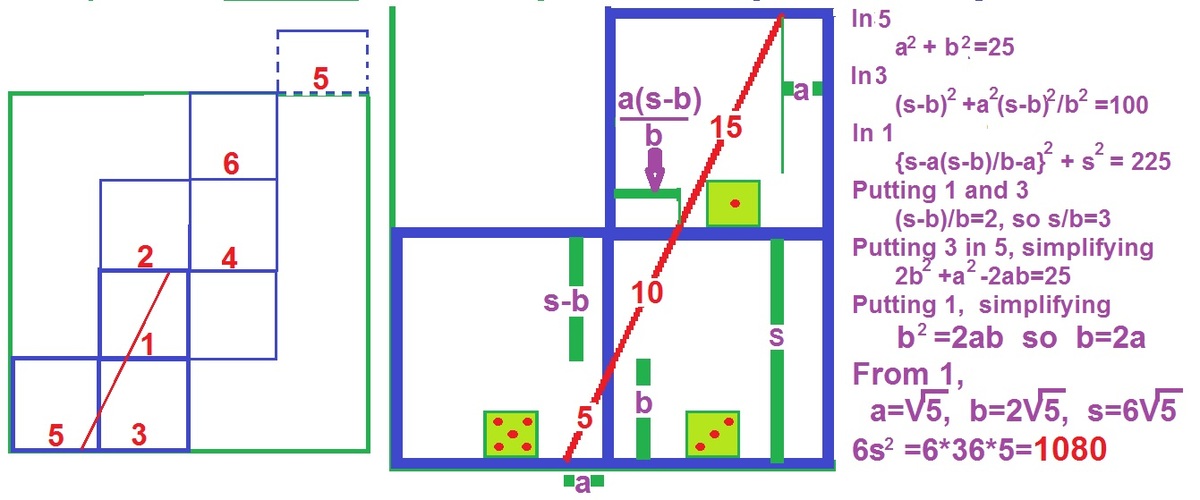Ant on a large die
An ant begins at a point P on one edge of an ordinary, but large, cubical die. He visits all 6 faces of the die in the following order: 5, 3, 1, 4, 2, 6, at which point he has returned to P. He takes the shortest possible route for this particular journey, walking 5cm, 10cm, 15cm, 5cm, 10cm, and 15cm respectively on each face.
Find the surface area of the die in cm .
Note: The opposite faces on an ordinary die add up to 7.
The answer is 1080.
This section requires Javascript.
You are seeing this because something didn't load right. We suggest you, (a) try
refreshing the page, (b) enabling javascript if it is disabled on your browser and,
finally, (c)
loading the
non-javascript version of this page
. We're sorry about the hassle.

The black arrow on the diagram shows the ant's journey. The key thing is that although this is the shortest route to visit all the faces in the order specified, it is not the shortest route to visit all the faces (that would be in the order 5, 3, 1, 2, 4, 6 or similar).
Notice that the ant walks 15cm across the "1" face. This length has been translated to create the hypotenuse of a right-angled triangle where s is the side length of the cube.
By Pythagoras' Theorem, we have s 2 + ( 2 1 s ) 2 = 1 5 2 which leads to s 2 = 1 8 0 .
Now s 2 is the area of one face of the cube, so the surface area of the cube = 6 s 2 = 1 8 0 × 6 = 1 0 8 0 cm 2 .
So the answer is 1080.